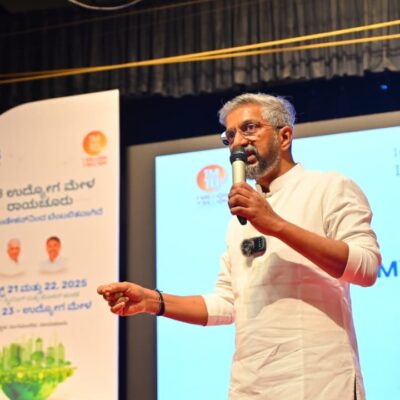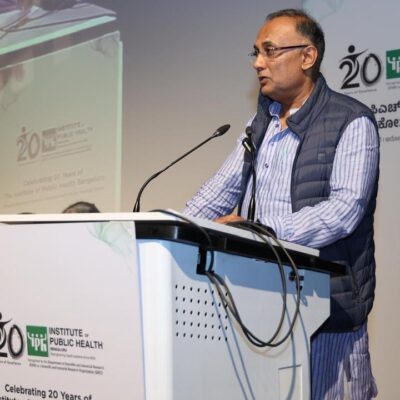
Bengaluru: Seniors mentoring younger colleagues is quite a common practice in several organizations, but as an innovative skilling exercise, juniors are now guiding their seniors in reverse mentorship programmes in areas like digital knowledge, an ASSOCHAM- CHRMP paper on HR has noted.
“In many organizations, reverse mentorship programmes have emerged as a successful strategy. In these programmes, younger employees share their digital know-how with senior leaders, creating a two-way exchange of skills and perspectives. This mutual learning process enhances communication across age groups and ensures that digital fluency becomes a shared asset rather than a source of division,”’ the paper titled The New Paradigm of Work: Talent, Technology & Transformation stated after extensive research of HR practices across different sectors.
The research, conducted by CHRMP (Certified Human Resource Management Professional) in collaboration with ASSOCHAM (Associated Chambers of Commerce and Industry of India), is based on primary research with 239 professionals from 194 organisations who contributed 8,126 data points by participating in the CHRMP Future of Work Survey.
It said leaders who champion these initiatives help demystify new technologies and demonstrate that learning is a lifelong endeavour. Moreover, leaders who “practice before they preach” create a culture of accountability and credibility.
“When the senior management personally engages with new tools and platforms, they provide tangible proof that change is possible and beneficial. This approach not only accelerates the adoption of innovative practices but also bridges the gap between scepticism and enthusiasm among more experienced staff, ultimately leading to a more unified and agile workforce,” the research report emphasised.
“As outlined in the paper, in a fast evolving world of technologies and business models, where learning has to be a lifelong engagement, it helps both individuals as well as companies they work in. Skilling and re-skilling is the name of the game, irrespective of organisational hierarchy,” said ASSOCHAM.
“The way employees prefer to learn varies considerably across generations. Younger professionals typically favour asynchronous, bite-sized learning modules that fit effortlessly into their dynamic schedules. These modules allow them to absorb information in small increments, aligning with their need for flexibility in an increasingly digital workspace. This method respects the pace at which they consume information and supports ongoing skill development without interrupting their daily routines,” the paper noted.
In contrast, more experienced employees often seek structured, formal training sessions that allow them to delve deeply into the subject matter. They value dedicated time for reflection, discussion, and interactive engagement, which in-person or scheduled sessions tend to provide.
“Blending these two approaches can yield significant benefits. For instance, companies have introduced hybrid learning environments that combine quick, interactive digital lessons with periodic live webinars. This dual approach has resulted in improved participation and knowledge retention, as it caters to the varied preferences of both younger and older employees while fostering an integrated learning culture,” Animesh Rai, COO of CHRMP/Ripples Learning, says.
“Our research underscores a vital shift in learning, where mentoring is no longer unidirectional but reciprocal, fostering collaboration and mutual respect across generations. Reverse mentorship not only equips senior leaders with essential digital skills but also empowers younger employees, reinforcing their role as catalysts for organizational innovation. Ultimately, the message is clear: for companies to thrive amidst rapid technological advancement and market unpredictability, they must invest in flexible, holistic HR strategies that prioritize continuous learning, adaptability, and the meaningful exchange of knowledge across all levels,” he added.
The report argued on the basis of its findings that HR is no longer just a support function — it is now a key driver of business transformation. Companies that embed HR leadership into strategic decision-making are better positioned to navigate change, foster innovation, and sustain competitive advantage. The focus is shifting from basic employee engagement metrics to holistic employee experience (EX) strategies, where well-being, work-life balance, and career growth are central to business priorities.
Future-ready organizations are investing in leadership pipelines that combine behavioral analytics, coaching, and digital learning experiences to prepare leaders for the challenges of an unpredictable market.
At the heart of this transformation lies the recognition that talent is multifaceted. It is influenced not only by an individual’s technical skills but also by diverse experiences, generational perspectives, and cultural backgrounds.
Studies reveal that different generations bring distinct work styles and values to the table. For instance, research shows that while more experienced professionals may favour traditional, face-to-face interactions and structured communication, younger cohorts such as Millennials and Generation Z lean towards flexible, digital modes of collaboration, the paper said, after going through several research reports on the subject.




